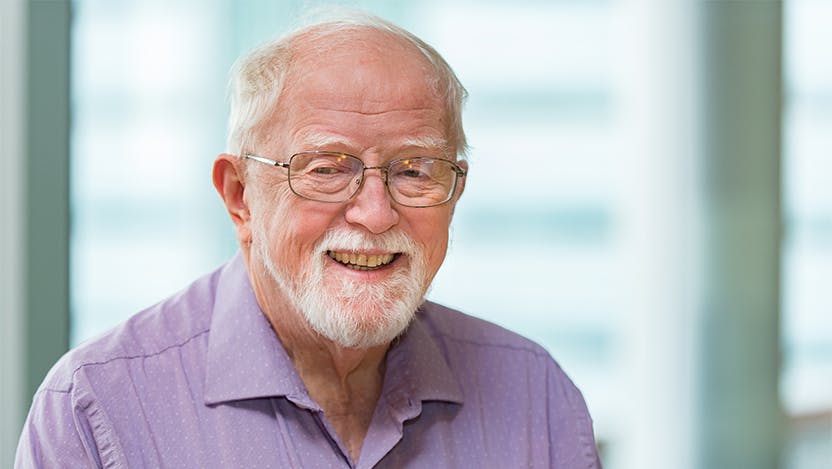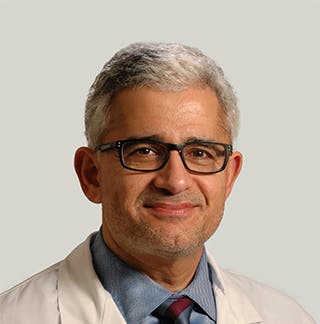Robotic mitral valve repair offers life-saving alternative to open-heart surgery

A leaking or regurgitating mitral valve in the heart is a common condition that often develops with age. To repair or replace a mitral valve, surgeons generally perform open-heart surgery, which requires the chest to be cracked open. A robotic mitral repair offers a better option for the majority of patients with a leaky mitral valve.
Robotic-assisted mitral valve surgery allows the surgeon to reach the problematic area through tiny incisions between the ribs, resulting in less damage to the surrounding muscle, shorter healing times and lower risk of complications. This approach is only available at innovative and highly specialized cardiac centers. The University of Chicago Medicine is one of the nation’s leaders in robotic cardiac surgery and home to the most comprehensive program in the country.
This robotic, minimally invasive option at UChicago Medicine saved 74-year-old Jim Mowers' life after two open-heart surgeries and numerous other treatments failed to resolve his mitral valve issues – and left him unable to endure another traditional surgery.
Mowers, an avid singer for more than 25 years, first noticed a problem in the spring of 2017. While on a tour of France with his church choir, he struggled to keep up with the group. “We went from one cathedral to another, and some of the time it was just too hard for me to climb up to the very top,” Mowers said.
The Elmhurst resident had already endured two open-heart surgeries since 2008 at another Chicago hospital. The first surgery was to repair his mitral valve, which directs blood into the heart’s main pumping chamber. The repair failed a few months later, and Mowers had a second open-heart surgery to replace the diseased valve with a bioprosthetic valve.
Soon after his trip to France, Mowers learned holes had developed around his mitral valve that were leaking blood, causing congestion in his lungs and leading to severe anemia.
His doctors believed he was too frail to undergo a third open-heart surgery, so they opted for nonsurgical, catheter-based procedures to stop the leaking. But nothing worked for long. Mowers grew increasingly weaker.
In September 2018, he met with UChicago Medicine cardiac surgeon Husam Balkhy, MD, Director of the Robotic and Minimally Invasive Cardiac Surgery Program, who agreed to take on his challenging case.
“It was a complex surgery,” Balkhy said. “We ended up taking out all the old plugs and replacing the mitral valve, and we completely avoided opening up his chest. Everything was done through small incisions, the largest being about 2 cm in length, and he recovered beautifully.”
For Mowers, this minimally invasive and robotic approach resulted in fewer complications, a faster recovery time and an earlier return to normal activity. “I felt better immediately,” he said.
It’s been more than a year since Mowers’ robotic heart surgery, and he’s back to singing and staying active. “I normally sing in the choir, but after the first open-heart surgery, I did not even have enough strength or breath to finish one verse of a full hymn,” he said. “Now I exercise every week, and I’ve even started a fitness class for golfers.”

Husam Balkhy, MD
Husam H. Balkhy, MD, is a pioneer in the field of minimally invasive and robotic cardiac surgery. He specializes in the treatment of coronary artery disease, heart valve disorders, atrial fibrillation and other cardiac diseases, using robotic and less invasive techniques in order to reduce pain, disability, and recovery time.
Learn more about Dr. Balkhy